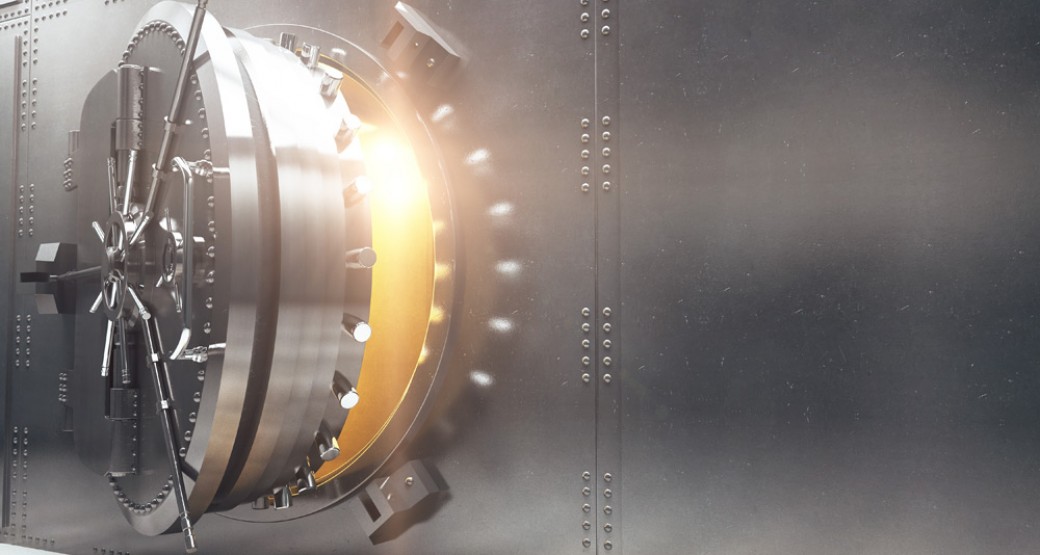It’s critical for banking and financial institutions to provide strong security, not just because of the money and valuable items inside, but also in order to protect their employees, customers, and guests. While armed security guards add a human element to the layers of safety, a high-performance security system can help monitor for potential problems in real time and alert authorities when something goes awry.
A reporter once asked infamous bank robber Willie Sutton why he robbed banks. He replied, “Because that’s where the money is.” Indeed, banks go through a lot of trouble to protect the cash. Alarms, safes, vaults, and highly secured access points make sure that all valuables are zipped up tight.
Comprehensive security for financial and banking institutions should also cover the people inside. Should a robbery occur, bank customers and employees risk getting caught in a highly dangerous situation. A well-designed security system will take all of this into consideration.
Elements of Security for Financial and Banking Institutions
A complete security system for a financial institution has multiple layers. Here are some of the features of a modern banking security system.
Access Control
One of the first lines of security is controlling physical access in and out of specific areas of the building. These help with safety, keeping unwanted individuals out, but they also provide a level of accountability. Solutions can be programmed to recognized individual key fobs or cards, keeping records of who gains access to certain areas and for how long.
Building Automation Control
In addition to providing safety, a bank’s security system can help streamline operations through automation control of things such as the heating, air conditioning, and lighting systems. This adds a level of convenience, but it also saves money, ensuring that the building is in maximum energy-saving mode after hours.
Emergency Process Control (SASC)
SASC is a cloud-based software system that allows emergency dispatchers, law enforcement, and businesses to exchange critical information in real time during an emergency situation. It can identify an incident and distribute alerts to people who need to know. It will then provide detailed instructions on a pre-planned response appropriate for the incident, as well as documenting what’s happening.
Fire Detection Systems
No security system is complete without a monitored fire detection system. Like all businesses, this is a key part of security for financial and banking institutions. The fire system will alert building occupants to a fire threat and contact rescue personnel, as well as anyone listed as a management contact.
Gunshot Monitoring
When gunfire occurs, there’s no need to wait for an employee to hit a panic button or someone to call 911. Gunshot monitoring devices analyze sound, listening out for events such as gunfire, breaking glass, loud and aggressive speech, or blaring car alarms.
License Plate Registration (LPR)
“Did anyone get the license plate number?” When a security camera system has LPR technology, the answer is yes. LPR systems automatically capture an image of any license plate that appears within view. Whether the suspects are still inside the building or have already fled, LPR is a useful tool in helping authorities identify them.
Lock Down
Triggering the lock down system in an emergency automatically causes specific doors to lock, securing the area within. This is useful in cases where there is an active shooter on the premises.
Panic Monitoring
Sometimes, robbers don’t shout, fire guns in the air, or do anything that would trigger a gunshot monitoring system. In other cases, the perceived threat isn’t even a robber, but someone with a mental illness or a disgruntled employee who is behaving in a strange or aggressive manner. In these cases, panic monitoring (also known as a “panic button”) can summon help in a safe and silent way.
People Monitoring/Traffic Analysis
Video analytics is a key part of security for financial and banking institutions. These systems can identify suspicious behavior such as strangers loitering around in unusual areas. Facial recognition software can watch for known criminals on the bank premises.
Security/Intrusion Monitoring
Whether someone is trying to access the facility after hours or has gained access to a restricted area without the proper security clearance, intrusion monitoring is one of the basic layers in a comprehensive bank security system.
Video Surveillance
Video surveillance is one of the most important aspects of security for financial and banking institutions. On a basic level, bank personnel and authorities can review video surveillance footage to determine how an event played out, identify suspects, or better improve security. Today’s video surveillance is more intelligent, however. Cloud-based monitoring allows emergency response teams to view video footage in real time should an incident occur. Video surveillance is also critical for loss prevention, and streaming means that bank management can view secure areas from remote locations.
Gone are the days when bank security consisted of a vault, a panic button, and a burglar alarm. With today’s highly advanced security solutions, financial institutions can rest assured that all of the valuables inside — including the people — are highly protected.
At ProTech Security, we have a strong history of experience, innovation, and customer service. The ProTech Security Advantage is more than 30 years of service in Northeast Ohio and a strong commitment to providing quality, cost-effective protection for homes, businesses, educational institutions and government facilities. To see what ProTech Security can do for you, contact us today.



